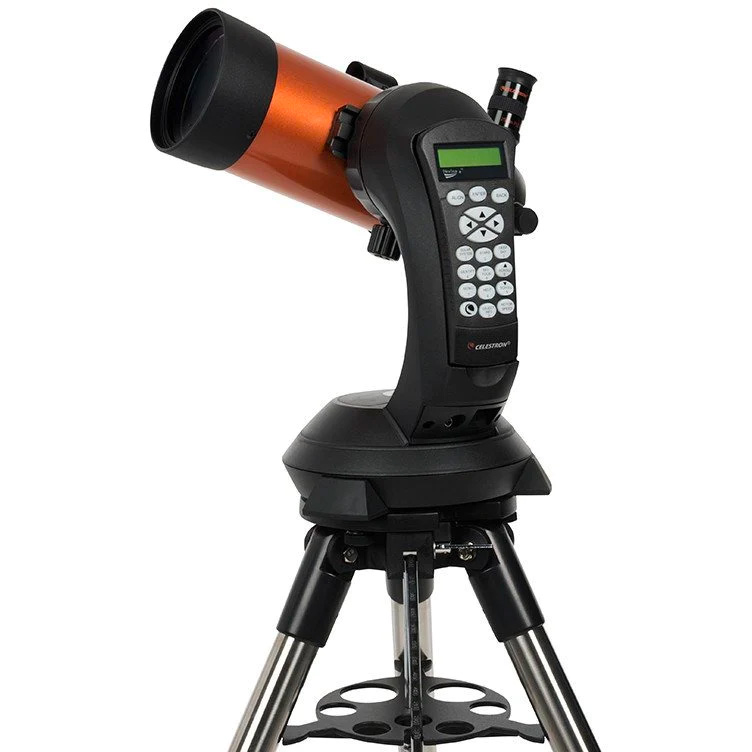Even to a casual viewer, the waxing gibbous moon of Friday, Feb. 7 will appear unusual. As it crosses the meridian shortly after 8 p.m. local standard time, it will climb so very high in the sky that from central Florida and southern Texas it will be seen overhead. For watchers in Miami or Brownsville, the moon will even pass north of the point directly overhead (the zenith).
To understand why this will happen, first consider that spring will officially arrive on March 20 at 5:01 a.m. Eastern Daylight Time, when the sun will shine directly down on the equator. Our four seasons are the by-product of the 23.5 degree tilt of the Earth’s axis and during the course of a year we see the sun cycle between declination 23.5 degrees north and 23.5 degrees south as it circles around the sky along the ecliptic. The sun’s changing declination is what determines whether the sun’s rays strike us at a low angle or more directly.
Declination on a celestial globe is analogous to latitude on a terrestrial globe. A star with a declination of +30 degrees would appear to pass directly overhead as seen from 30 degrees north latitude. The changing declination also defines the daily arc that the sun takes across the sky, thereby accounting for the length of daylight.
Moon’s ups and downs
TOP TELESCOPE PICK:

Want to see the moon up close in the night sky? The Celestron NexStar 4SE is ideal for beginners wanting quality, reliable and quick views of celestial objects. For a more in-depth look, see our Celestron NexStar 4SE review.
Similarly, the moon too goes through these up and down motions, but cycles through the entire sky much more quickly: once every month. And, in fact, the moon can range even farther to the north and south than the sun because its orbit is inclined 5.1 degrees to the ecliptic. In special years this tilt adds to the ecliptic’s own inclination and as a result the moon can attain unusually high or low altitudes in our sky.
There is even a special term for this circumstance: lunistice, or “major lunar standstill.”
And this is one of those “special’ years.
During early 2025 the moon’s declination has its maximum range, from about 28.5 degrees north of the celestial equator to 28.5 degrees south. In contrast, during 2016-16 the lunar declination varied from only 18.5 degrees north to 18.5 degrees south.
Breaking space news, the latest updates on rocket launches, skywatching events and more!
The moon’s ascending node (the point in the sky where its orbit crosses the ecliptic from south to north) is moving westward around the ecliptic once in 18.61 years (6,798 days). This drift carries the node early this year through the March equinox, and hence the moon’s path is tilted 23.5 degrees + 5 degrees = 28.5 degrees to the equator.
As a result, in 2025, when the moon ends up being positioned farthest to the north around the border of Taurus and Gemini, it will appear to ride unusually high in the sky as it crosses the meridian. Conversely, on the other side of the sky, in Sagittarius, where the ecliptic is oriented farthest south, it will appear to run unusually low. While these tilts coincide every 18.6 years, the moon can appear unusually far north or south for more than several months before and after they max out.
In the table below, are the dates when the moon will be passing through these areas of the sky during this year.
| Highest moon | Lowest moon |
|---|---|
| Jan. 11 | Jan. 26 |
| Feb. 7 | Feb. 22 |
| March 7 | March 22 LQ |
| April 3 | April 18 |
| April 30 | May 15 |
| May 28 | June 12 |
| June 24 | July 8 |
| July 22 | Aug. 4, 2005 |
| Aug. 18 | Sept. 1 |
| Sept. 14 LQ | Sept. 28 |
| Oct. 12 | Oct. 26 |
| Nov. 8 | Nov. 22 |
| Dec. 6 | Dec. 19 NM |
NM = New Moon; LQ= Last Quarter
The highest and lowest moons
The highest peak of all marks a declination of 28° 43′ on March 7th of this year, less than a day after the first quarter moon.
By contrast, the moon will go as far as 28° 44′ south of the equator a little over two weeks later, on March 22, four hours 51 minutes before last quarter.
It should be interesting to compare the altitude of the moon when it crosses the meridian at these respective extremes, by looking at it about 75 minutes after sunset on March 7 and about 10 minutes after sunrise on March 22.
Held at arm’s length, your clenched fist measures roughly 10 degrees in width. The angular difference between the extremes of March 7 and 22 will differ by about 57.5 degrees or the equivalent of nearly six fists!
The “Honey Moon”
Incidentally, the full moon of June 11 will nearly coincide with the date when the moon will run exceptionally low. About a quarter hour before 2 a.m. local daylight time on the following morning (June 12), the moon’s altitude above the southern horizon will measure only about 20-degrees (“two fists”) as seen from mid-northern latitudes, and in addition, it will be above the horizon for only a little more than 8 and a half hours.
Guy Ottewell of Great Britain, who is the author of the very popular annual publication “Astronomical Calendar,” has pointed out that the popular term “honeymoon” may have evolved from the low journey that the June full moon takes across the sky. “Honey,” he notes, has been thought of “. . . as a term of endearment, which dates back at least to the year 1350; a corruption of hymenae, the Greek wedding songs; and, as weddings are often in June, the color of the midsummer full moon, often appears a golden color because it is seen through a lower layer of the atmosphere.”
Considering that this June’s full moon will appear to take an unusually low arc across the southern sky, suggests that its golden hue may be more accentuated compared to other years.
Joe Rao serves as an instructor and guest lecturer at New York’s Hayden Planetarium. He writes about astronomy for Natural History magazine, the Farmers’ Almanac and other publications.








